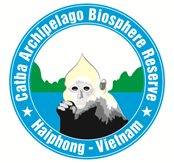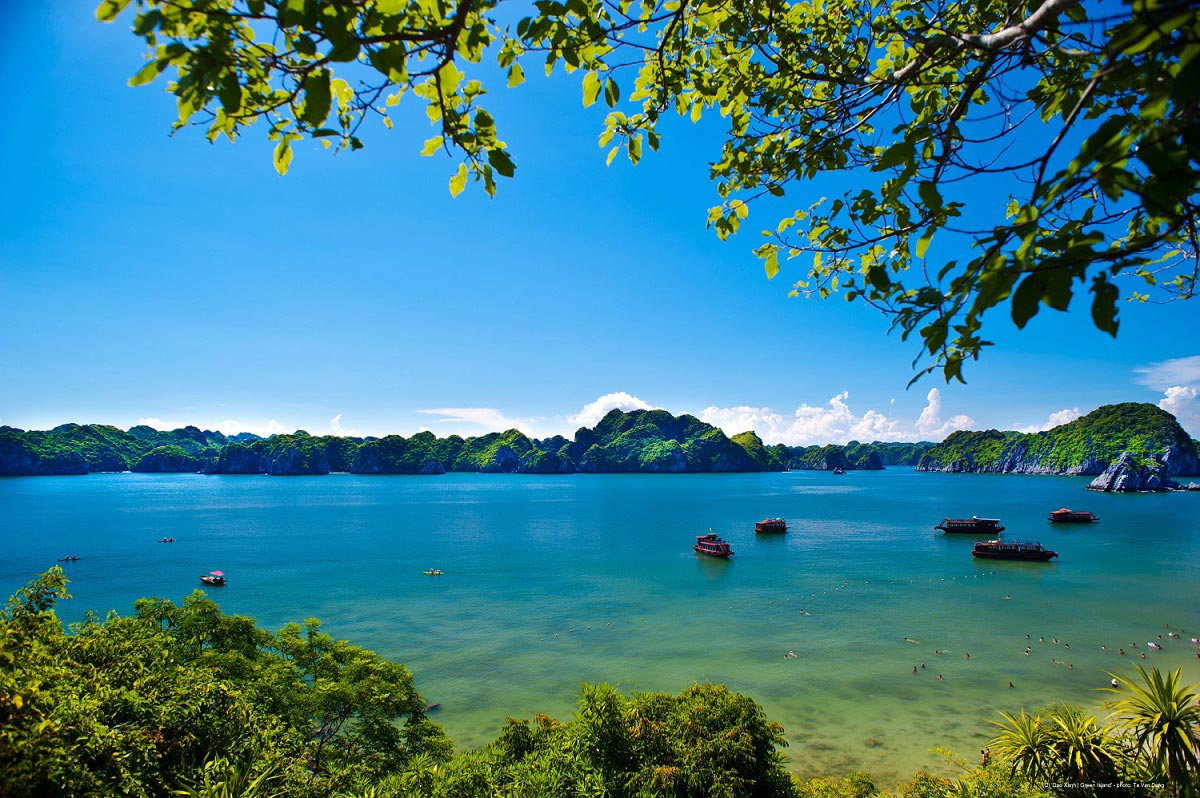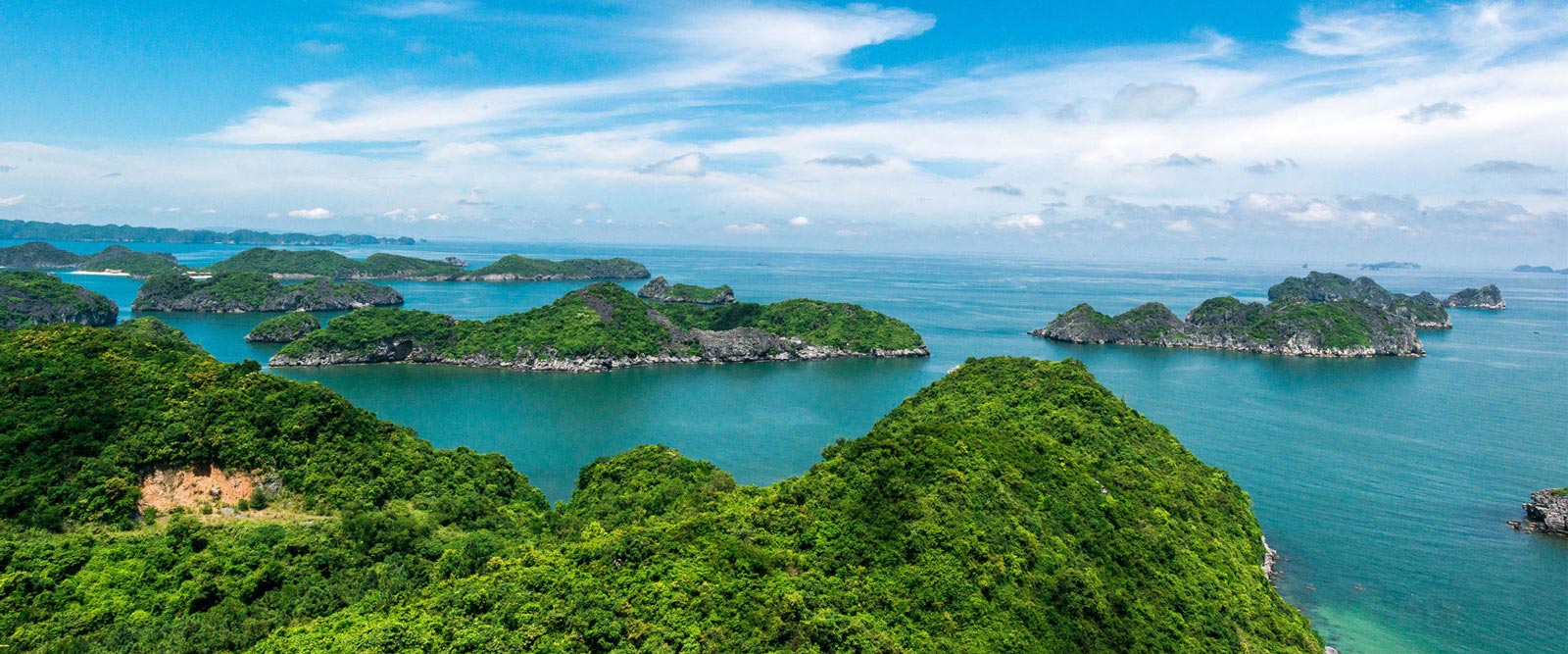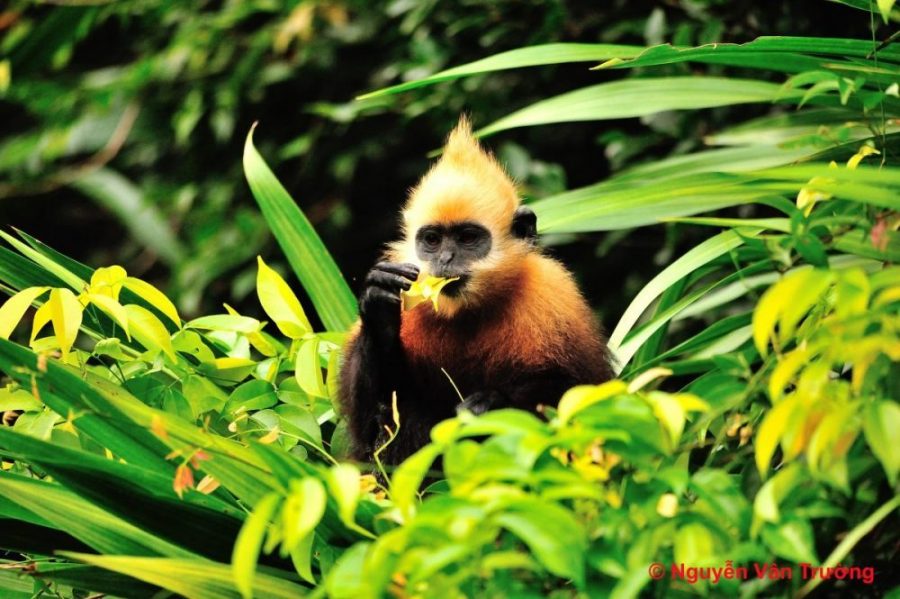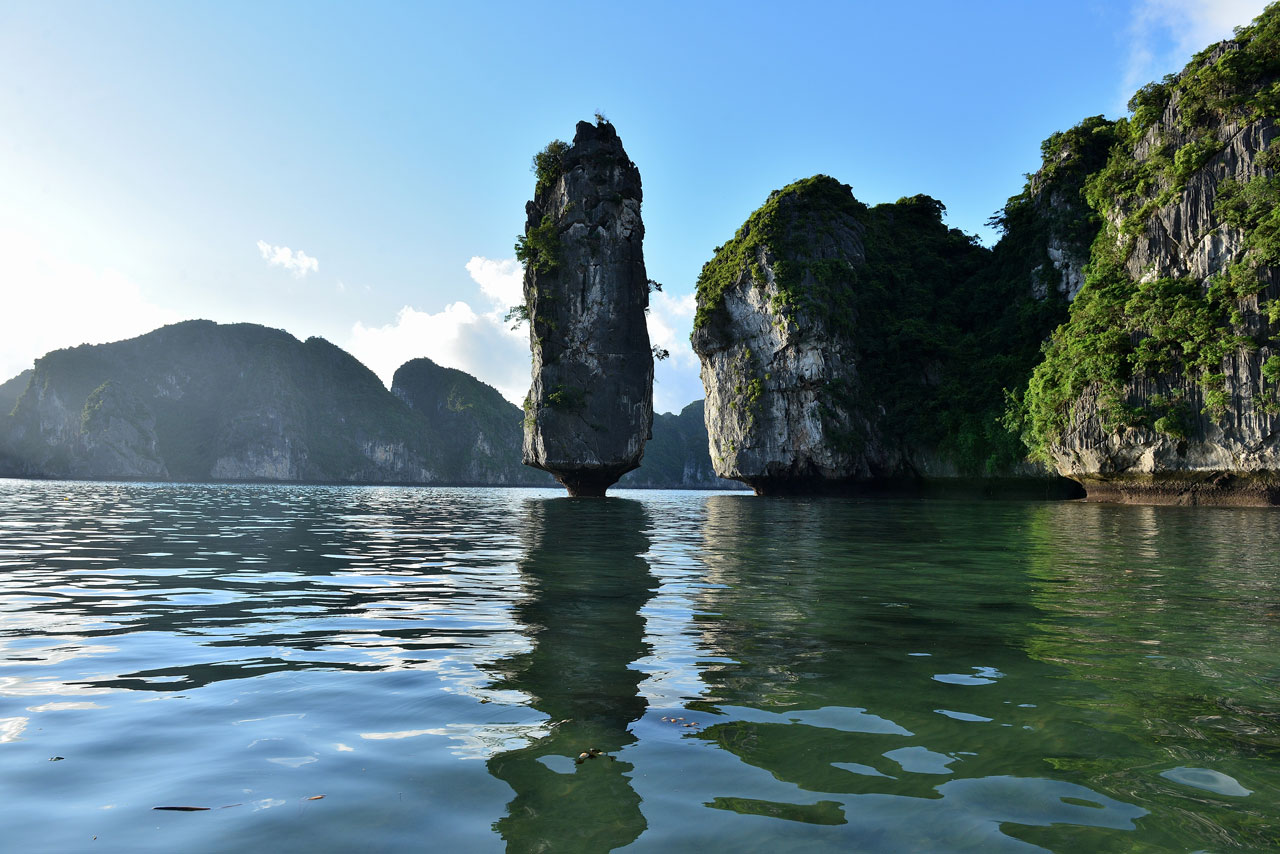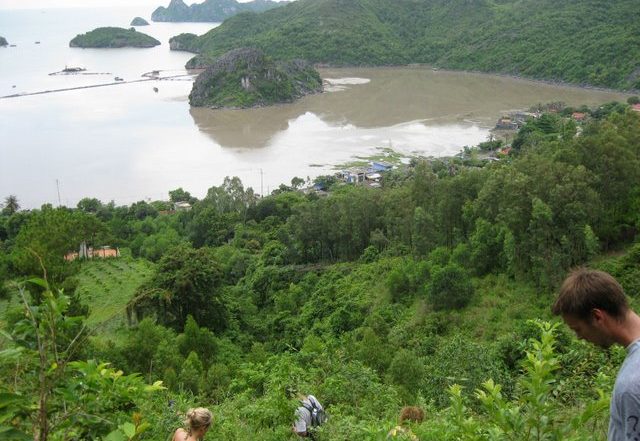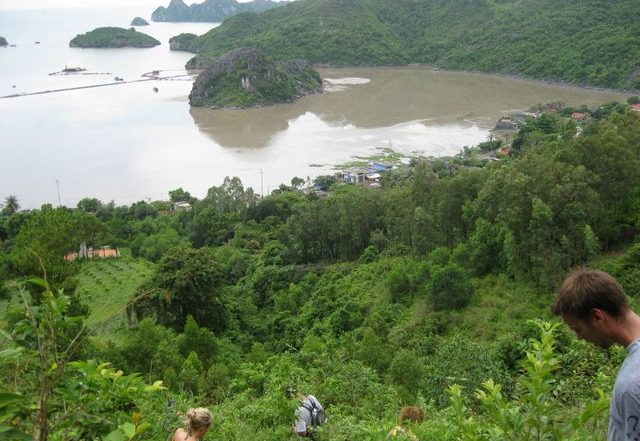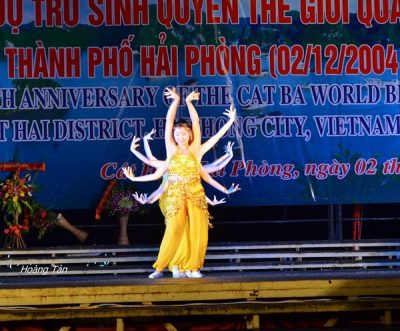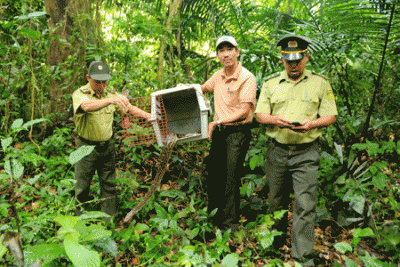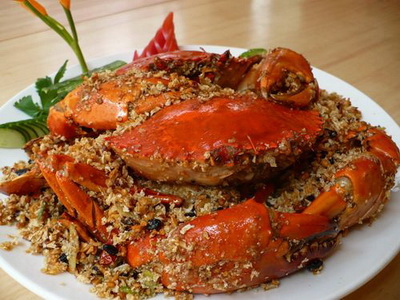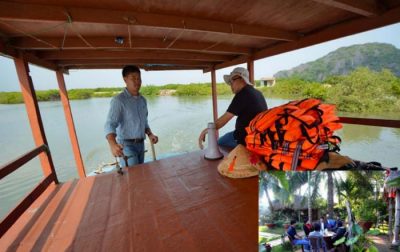CAT BA BIOSPHERE RESERVE
Biosphere Reserve is “the model of national, regional sustainable development”
(Lima Action Plan 2016-2025).
As stated in the Statutory Framework of the World Network of Biosphere Reserve, biosphere reserves are “areas of terrestrial and coastal/marine ecosystems or a combination thereof, which are internationally recognized within the framework of UNESCO’s programme on Man and the Biosphere (MAB)”.
Biosphere reserves are nominated by national governments and remain under the sovereign jurisdiction of the states where they are located. Their status is internationally recognized.
Functions of Biosphere Reserves
on a regional scale:
(i) conservation – contribute to the conservation of landscapes, ecosystems, species and genetic variation;
(ii) development – foster economic and human development which is socio-culturally and ecologically sustainable;
(iii) logistic support – support for demonstration projects, environmental education and training, research and monitoring related to local, regional, national and global issues of conservation and sustainable development.
Cat Ba Biosphere Reserve is designated on December 02, 2004.
Criteria for Biosphere Reserve nomination
- It should encompass a mosaic of ecological systems representative of major biogeographic regions, including a gradation of human interventions.
- It should be of significance for biological diversity conservation.
- It should provide an opportunity to explore and demonstrate approaches to sustainable development on a regional scale.
- It should have an appropriate size to serve the three functions of biosphere reserves.
- It should include these functions, through appropriate zonation, recognizing:
(a) a legally constituted core area or areas devoted to long-term protection, according to the conservation objectives of the biosphere reserve, and of sufficient size to meet these objectives;
(b) a buffer zone or zones clearly identified and surrounding or contiguous to the core area or areas, where only activities compatible with the con servation objectives can take place;
(c) an outer transition area where sustainable resource management practices are promoted and developed.
- Organizational arrangements should be provided for the involvement and participation of a suitable range of inter alia public authorities, local communities and private interests in the design and carrying out the functions of a biosphere reserve.
- In addition, provisions should be made for
(a) mechanisms to manage human use and activities in the buffer zone or zones;
(b) a management policy or plan for the area as a biosphere reserve;
(c) a designated authority or mechanism to implement this policy or plan;
(d) programmes for research, monitoring, education and training.
MAN AND BIOSPHERE (MAB) PROGRAM
The MAB Programme Launched in 1971, UNESCO’s Man and the Biosphere (MAB) Programme is an intergovernmental scientific programme that, from its beginning, has aimed to establish a scientific basis for the improvement of relationships between people and their environments. MAB combines the practical application of natural and social sciences, economics and education to improve human livelihoods and the equitable sharing of benefits, and to safeguard natural and managed ecosystems, promoting innovative approaches to economic development that are socially and culturally appropriate and environmentally sustainable. In practice, the MAB Programme is implemented in biosphere reserves. They may contain terrestrial, coastal and/or marine ecosystems, which should be representative of their biogeographic region and of significance for biodiversity conservation. Each biosphere reserve promotes solutions reconciling the conservation of biodiversity with its sustainable use, towards sustainable development at the regional scale. While biosphere reserves are 4 nominated by national governments and remain under the sovereign jurisdiction of the states where they are located, their global status as biosphere reserves is internationally recognized. Biosphere reserves are models to test and apply interdisciplinary approaches to understanding and managing changes in social and ecological systems, and their interaction, including conflict prevention and the conservation of biodiversity.
Vision and Mission of the MAB Programme
Our vision is a world where people are conscious of their common future and interaction with our planet, and act collectively and responsibly to build thriving societies in harmony within the biosphere.
The MAB Programme and its World Network of Biosphere Reserves (WNBR) serve this vision within and outside biosphere reserves.
Our mission for the period 2015-2025 is to:
- Develop and strengthen models for sustainable development in the WNBR;
- Communicate the experiences and lessons learned, facilitating the global diffusion and application of these models;
- Support evaluation and high-quality management, strategies and policies for sustainable development and planning, as well as accountable and resilient institutions;
• Help Member States and stakeholders to urgently meet the Sustainable Development Goals through experiences from the WNBR, particularly through exploring and testing policies, technologies and innovations for the sustainable management of biodiversity and natural resources and mitigation and adaptation to climate change.
HIGHLIGHTS
International cooperation
Hai Ba Trung and Cat Ba Biosphere Reserve cooperate with UNESCO Hanoi Office, MAB Vietnam Committee, International System Science Society (ISSS) officially launch Science Application Project The system integrates complex management issues in sustainable development management in Hai Phong, in which the ongoing component of the Cat Ba Biosphere Reserve Project is the Developmental Learning Laboratory sustainable development. Results and lessons from this collaborative project will be presented at the International Conference on Systemic Science for the first time hosted in Vietnam (chaired by Haiphong City, July 2013).
Capacity Building Support
Capacity Building on Environmental Protection and Biodiversity in Cat Ba World Biosphere Reserve, Cat Ba Archipelago, Bach Long Vy in 2017 I. Activities that have been implemented 1. To elaborate, submit for promulgation, and promulgate according to its competence, documents and guidance on environmental management and protection and biodiversity in localities.
Cat Ba becomes a biosphere reserve in the world
Sau rừng ngập mặn Cần Giờ và vườn quốc gia Cát Tiên, đến lượt quần đảo Cát Bà được UNESCO công nhận là khu dự trữ sinh quyển thế giới thứ ba tại Việt Nam. [...]
Cat Ba World Biosphere Reserve
Quần đảo Cát Bà là quần thể gồm 367 đảo trong đó có đảo Cát Bà ở phía nam vịnh Hạ Long, ngoài khơi thành phố Hải Phòng và tỉnh Quảng Ninh, cách trung tâm [...]
Overview of Cat Ba Archipelago
Khu Dự trữ sinh quyển thế giới Quần đảo Cát Bà được UNESCO công nhận ngày 02/12/2004, diện tích 26.241 ha (17.041 ha phần đảo, 9.200ha phần biển), nằm trên diện tích của VQG Cát [...]
Cat Ba National Park – a precious biosphere reserve
Xuôi về phía đông nam thành phố Hải Phòng khoảng 60km, quần đảo Cát Bà (thuộc huyện Cát Hải) có diện tích khoảng 200km2, gồm 366 hòn đảo lớn nhỏ. Nơi đây, có nhiều địa [...]
